You have added aquarium snails to control algae and help keep the tank clean, but now you are noticing small, jelly-like deposits on the glass.
Or perhaps you introduced a new live plant into your aquarium and are just now noticing something attached to the underside of the leaves.
Could these be snail eggs? There is a good chance the answer is: yes.
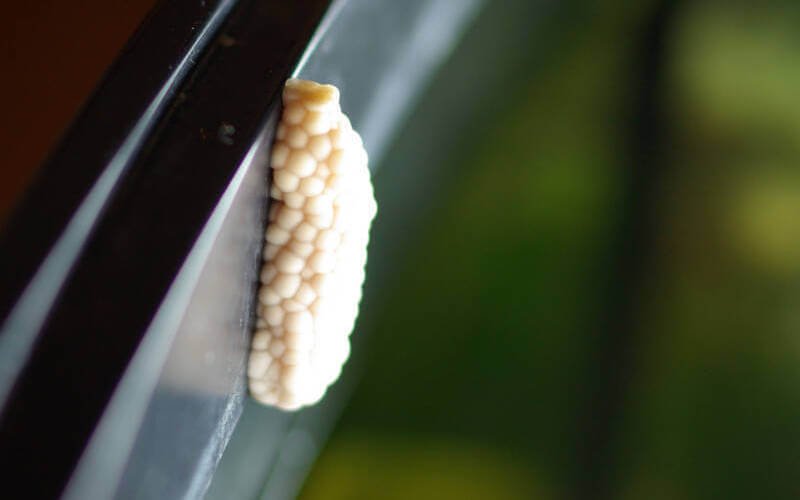
Many snail species breed readily in an aquarium setting – some breed so quickly and prolifically that they are even considered unwanted or pest species.
Such effective and rapid breeders can quickly take over an aquarium. The result can be an overcrowded tank, which can impact your aquarium’s water quality as well as the overall aesthetics.
There are other freshwater snails, however, that are difficult to breed at home and require specific water conditions for the eggs to hatch.
Still, those species are slow breeders, laying from one to five eggs at a time. For these snails, you have less worry that they will overrun your aquarium.
But how do you identify snail eggs, and what do you do if you see them?
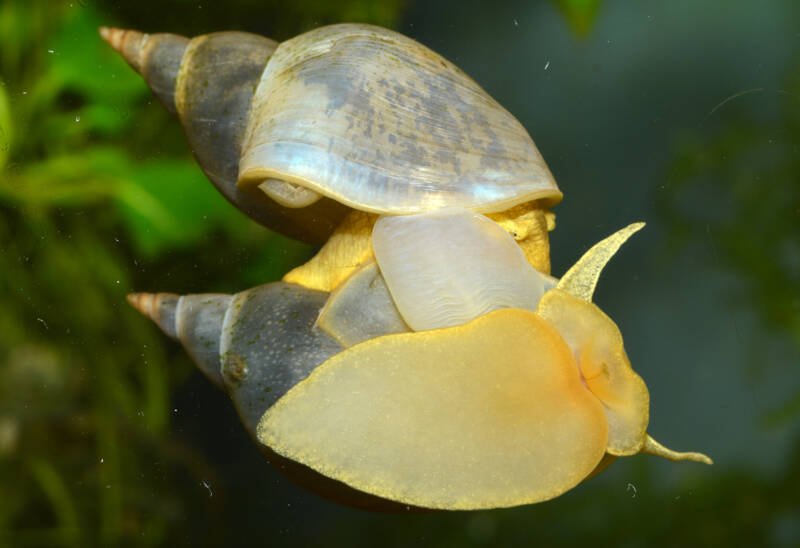
In this article, we look at some commonly asked questions regarding freshwater snails and their eggs.
In this article
- What do snail eggs look like in a fish tank?
- Should snail eggs be kept in water?
- What do I do if my freshwater snail lays eggs?
- How long do aquarium snail eggs take to hatch?
- How do you know if a snail egg is alive?
- Do aquarium snails die after laying eggs?
- Can you move aquarium snail eggs?
- How can I safely move snail eggs?
- Can snail eggs dry out?
- How do I keep aquatic snail eggs moist?
- What food makes snails grow faster?
- Closing Thoughts
What do snail eggs look like in a fish tank?
What the eggs look like inside your fish tank depends a great deal on the species of snail. Once you know what you are looking for, it becomes easier to identify them.
1. A cluster of eggs above the waterline
Some species of snail, such as the apple snail, lay their eggs above water.
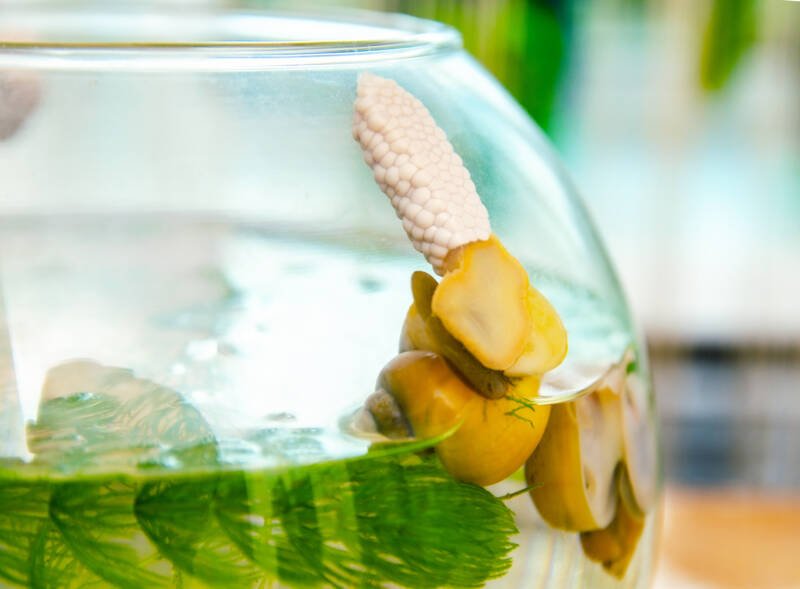
Apple snail eggs, in particular, appear in a pinkish-red cluster and contain a toxin that makes them inedible for other predators.
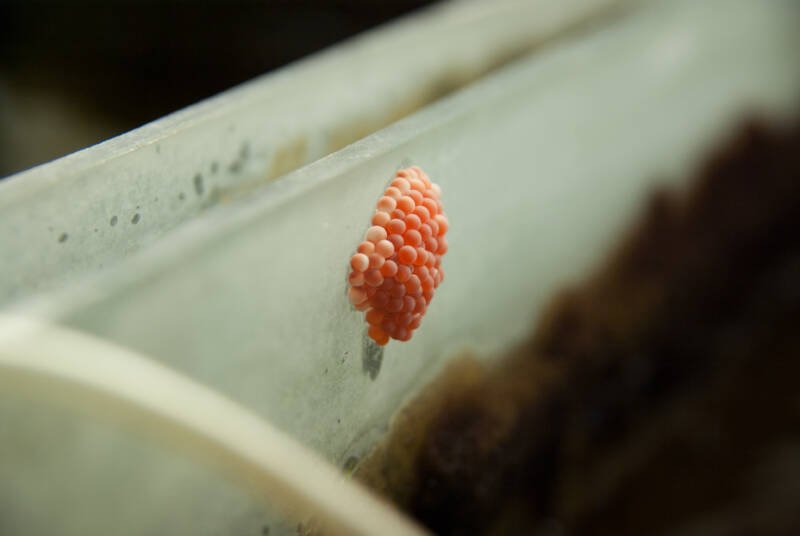
The mystery snail is another type of snail that can lay its eggs at or above the waterline.
2. A sac of eggs below the waterline
Other snail species lay their eggs under the waterline. Chances are, you will find them attached to the leafy underside of live plants, to decorations along the bottom of the tank, on top of the substrate, or even on the glass of your aquarium.
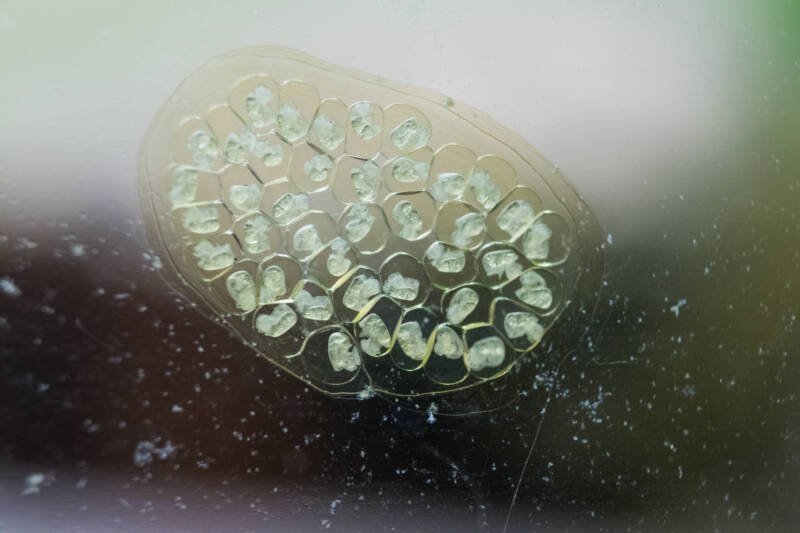
These eggs are usually clear or white, laid in a clump, and contained within a clear, jelly-like sac. The ramshorn snail is one species that lays its eggs this way. The pond and bladder snails are another.
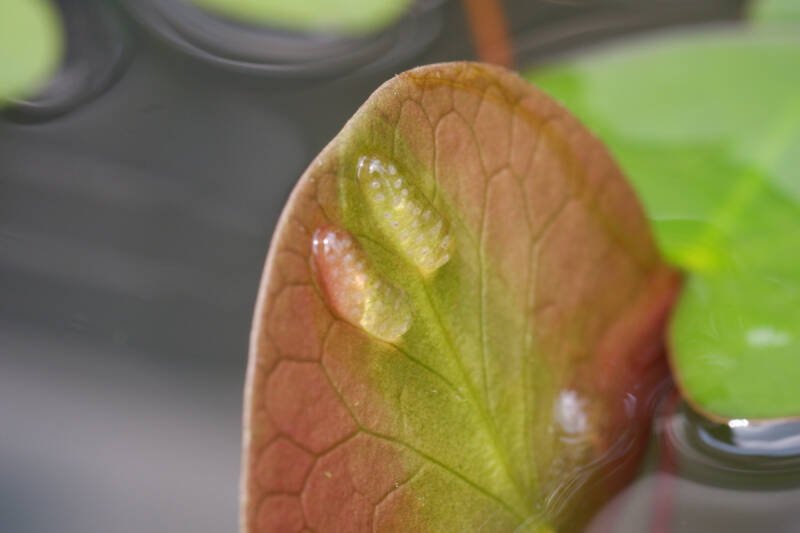
3. Single or small groups of eggs
The nerite snails lay a single white or clear egg at a time, usually attached to submerged decorations.
It is worth noting that these eggs will not hatch in a freshwater tank as the eggs require brackish water to complete development. These eggs are also well stuck to the surface and can be difficult to remove.
Assassin snails also lay single eggs, but these may be difficult to find as this species likes to hide them within crevices.

4. Live bearing snails
Finally, some snail species give birth to live snails. Rabbit snails and Malaysian trumpet snails are two examples.
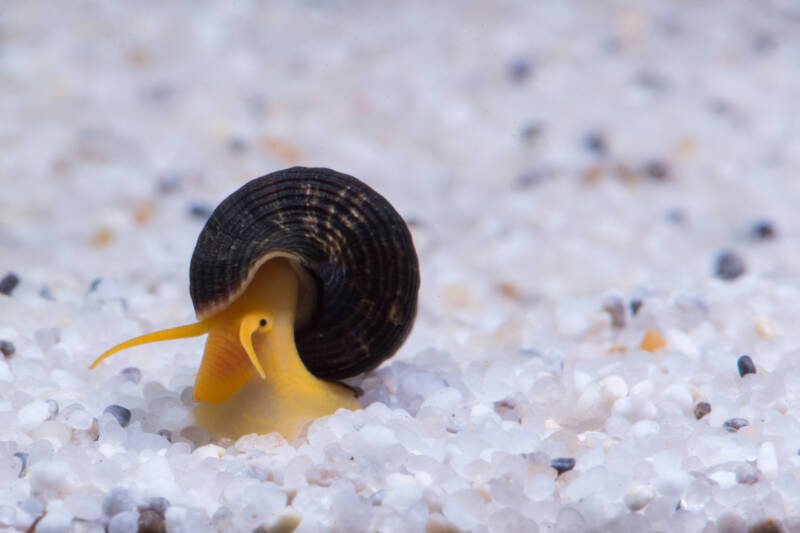
The female trumpet snail has a special cavity in which the eggs develop. The snail babies remain inside the cavity until they are ready to emerge. There can be a significant number of new baby snails for each birthing event as the eggs are very tiny, and the female can incubate up to 100 eggs at a time.
Rabbit snails, on the other hand, develop a lower number of eggs, anywhere from one to five at a time. When these eggs are ready to hatch, the female deposits them on a hard surface or on the substrate, the eggs then hatch within a few hours.
Although the eggs are laid before they hatch, rabbit snails are still considered livebearers because of the short time between these events.
Should snail eggs be kept in water?
If the snail deposited the eggs below the waterline and you wish for them to hatch, then they need to remain in the water.
Species that lay their eggs below the water line require the eggs to remain submerged.
Other snail species, such as the apple snail, lay their eggs above the waterline. These eggs should not be submerged in water, or they will die. However, the overall humidity should be high, or the eggs can dry out.
What do I do if my freshwater snail lays eggs?
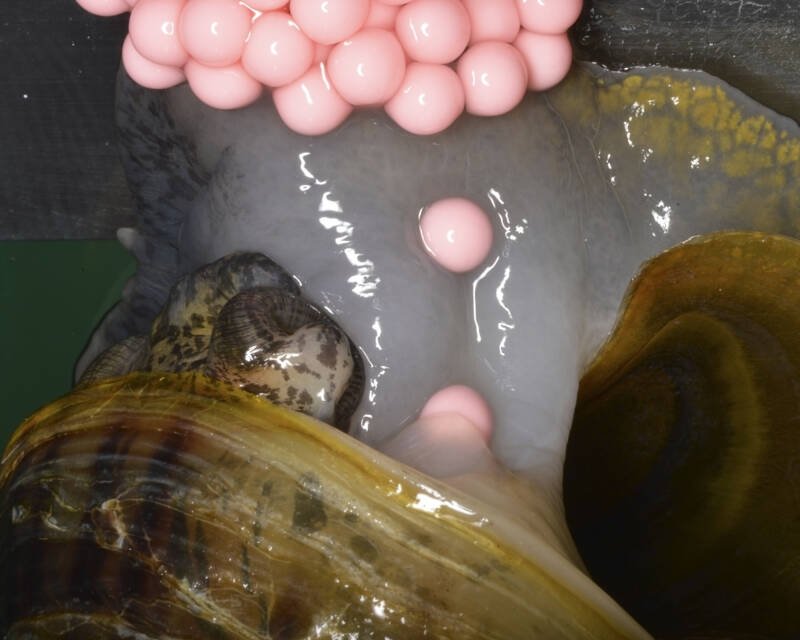
If you want the eggs to hatch, and they are safe in their current environment to do so, then most of the time you do not have to do anything.
However, if the water conditions are not conducive to hatching or if there is a chance that the other tank inhabitants will eat the eggs or newly hatched baby snails, then you may need to move the eggs to a breeding tank.
If you do not want additional snails in your aquarium, you will have to remove the eggs. Remove any items to which the eggs are attached, treat them with marine salt, quarantine them for several weeks, and then return them to your tank.
Eggs attached to other aquarium parts, such as glass or lids, can be scooped away.
How long do aquarium snail eggs take to hatch?
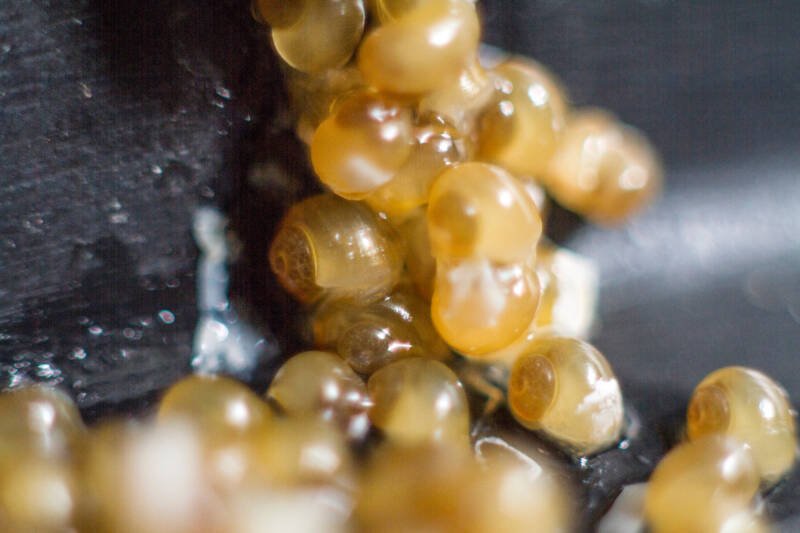
If the eggs are fertilized, the time to hatch varies by species:
- Ramshorn snail eggs will hatch in as quickly as two to five weeks.
- Apple snail eggs can take anywhere from three to four weeks.
- Assassin snail eggs take slightly longer, from six to eight weeks.
- Rabbit snails incubate their eggs within their body cavity for four to six weeks before laying them on a hard surface to hatch. Viable eggs will eventually develop a black spot within them. Unfertilized eggs will remain clear.
How do you know if a snail egg is alive?
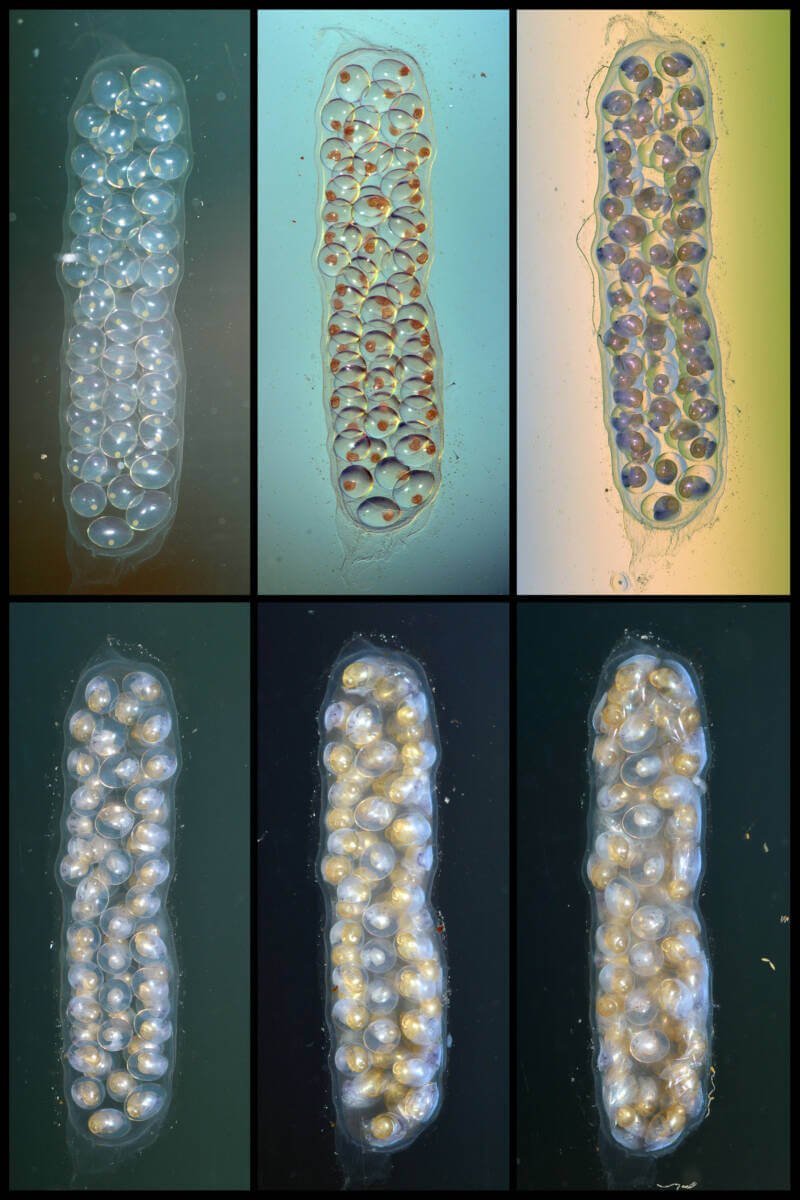
Snail eggs that do not develop remain white or clear.
Unfertilized eggs or those that do not develop for one reason or another should be removed from the tank if they are not consumed by other fish or scavengers. This to keep the water quality from being negatively impacted due to the decaying matter.
For those fertilized eggs, you will see a black dot in the center of them, which indicates that they are developing.
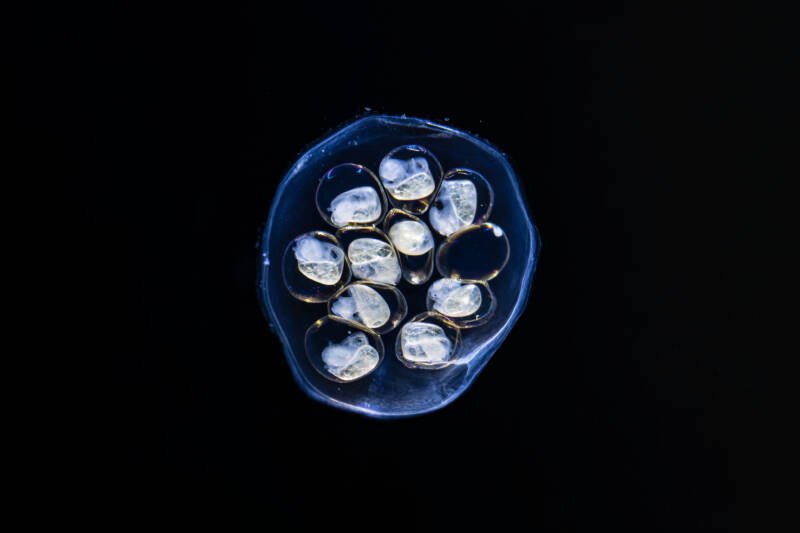
Do aquarium snails die after laying eggs?
No, snails do not die after laying eggs. If you notice this happening, check to make sure no other factors are impacting your snail’s health.
Verify that the water conditions are within acceptable ranges and that the water is well oxygenated. Another reason your snails may be dying is due to tank overcrowding.
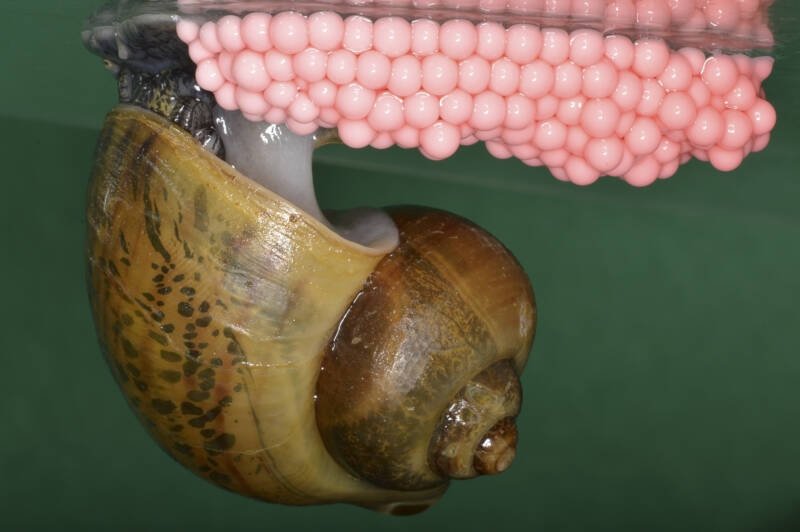
Finally, some species do not have a long lifespan. The apple snail lives for one to three years, so it may simply be your snail’s time.
Can you move aquarium snail eggs?
In general, if you want the snail eggs to hatch, you should leave them where they are.
There are times, however, when you want to remove the snail eggs from your aquarium. For example, you may not want those eggs to hatch and cause overpopulation of snails, which can significantly upset the balance of your tank.
Water quality may suffer from too many snails producing waste as they eat. If a large population of snails dies off, the ammonia from the decay can impact your other tank inhabitants.
Another reason to remove the eggs is if the eggs cannot hatch in that environment. The nerite snail is one example. Their eggs must have brackish water to hatch.
If your nerite snail has laid eggs in a freshwater aquarium, they will need to be relocated to a brackish tank if they are to survive.
A final reason you may need to move your eggs is to keep them from being eaten by other fish in the aquarium. Many fish species find snail eggs a tasty treat and might eat the eggs or the newly hatched snails.
If you need to remove snail eggs from your aquarium, first remove the object to which they are attached, if possible. This is simple if the eggs are attached to a movable decoration, such as a piece of driftwood.
If the eggs are attached to the tank’s glass surface, simply scoop or scrape them off.
How can I safely move snail eggs?
Moving snail eggs without damaging them can be tricky, but sometimes it must be done.
First, try to gently remove the eggs with your fingers. Wait 24 to 48 hours after the eggs were laid to allow the casing to firm up slightly. If you try to separate the eggs earlier, you can damage them.
If that does not work, slide a thin, flat object, such as a razor blade or credit card, underneath the eggs. Gently wiggle the egg case to loosen it as you slide the razor beneath. Be aware that this method can damage some of the eggs on the bottom.
What if I don’t want the eggs to hatch?
In this case, humanely euthanize the eggs by freezing them before discarding.
Can’t I just take the eggs to a nearby lake or river?
No. You should never release aquarium pets into wild habitats. Some snail species are highly invasive and can quickly upset the balance of a natural ecosystem.
In addition, your local area may have laws prohibiting the introduction of snails and eggs to aquatic environments.
What if only some of the eggs have hatched? Should I remove the others?
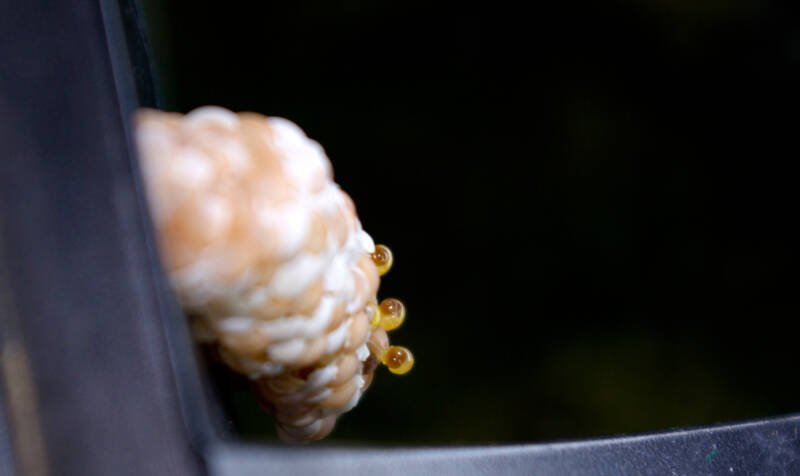
Yes. The time for snail eggs to hatch varies depending on the species and can take anywhere from 10 days to four weeks.
If you still have unhatched eggs but see baby snails, the remaining eggs are likely infertile. Decaying eggs can elevate your water’s ammonia levels, so remove them promptly. Scrape the eggs from the surface and dispose of them.
Can snail eggs dry out?
Yes. For species that lay their eggs above the water line, moisture is critical. Once the eggs dry out, they are no longer viable.
Can I move the eggs into the water?
No. Eggs laid above the water line must remain there. They cannot be moved into the water, or the young will drown.
How do I keep aquatic snail eggs moist?
If your tank’s water temperature is warm and the hood is tight-fitting, you may not have to do much at all.
Check the eggs to see if they are staying moist. Condensation on the lid of the tank indicates adequate moisture level.
Mist the eggs. A spray bottle with a fine mist setting applied twice a day is sufficient.
Alternatively, you could install an automatic aquarium mister. This device will provide a continuous, fine mist and save you from remembering to spray the eggs.
Set up an “incubator.” Take a small plastic container and punch some holes in the lid. Place a damp paper towel on the bottom and lay the eggs on top of that.
Make sure that the towel is damp, not wet, as too much water will damage the eggs. Close the lid and float the container in your aquarium. Check the eggs daily to ensure they are remaining moist and replace the damp paper towel.
What food makes snails grow faster?
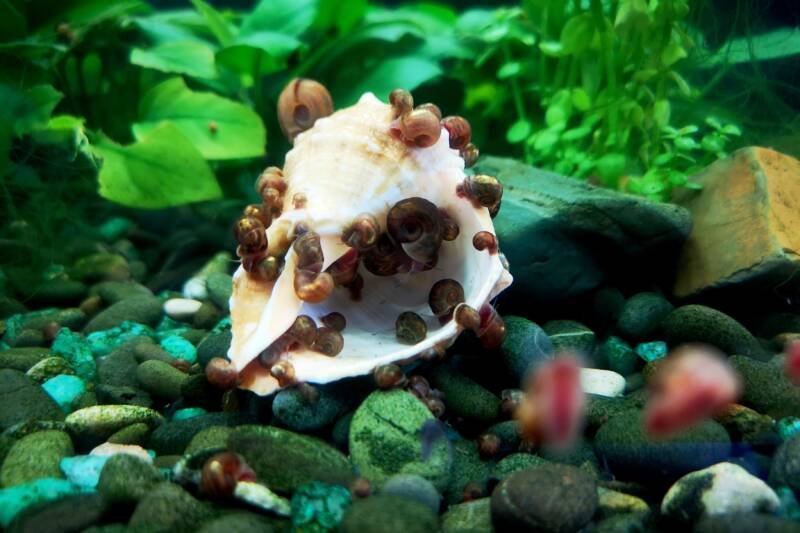
The best way to make sure your colony of snails grows faster is to dedicate a breeding tank for them. That way, the baby snails or snail eggs do not get eaten by other tank members.
Place the snails in a tank with the appropriate water conditions and an adequate food supply, and the rest will take care of itself.
Adult snails do not typically require additional food. They satisfy most of their dietary needs through their daily scavenging in the tank. If you like, you can supplement with raw and blanched vegetables, sinking pellets, or wafers.
Baby snails do not require any special type of food. They begin scavenging immediately and readily consume any algae, biofilm, and plant matter that they find in the tank. As with the adults, you can supplement their diet with blanched vegetables or fish food.
Talk with your breeder about recommendations for water hardness and calcium requirements to help keep their shells strong.
Closing Thoughts
Raising and breeding aquarium snails can be a fun and rewarding activity.
Knowing the snail species in your aquarium and their specific breeding habits and requirements will help you have the most successful experience. As we have mentioned, in most cases, the process will take care of itself.
We would love to hear from those of you who have seen snail eggs in their aquarium or who have successfully bred their snails!
Did your freshwater snails breed in your community aquarium, or did you use a dedicated breeding tank?